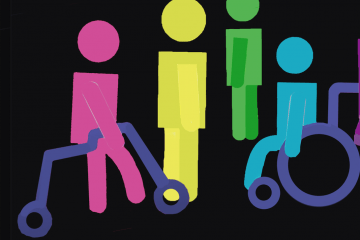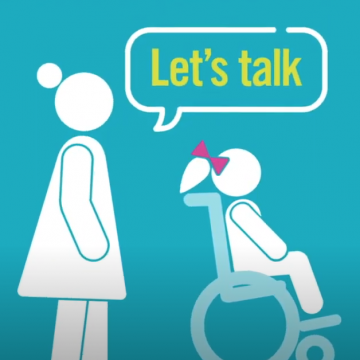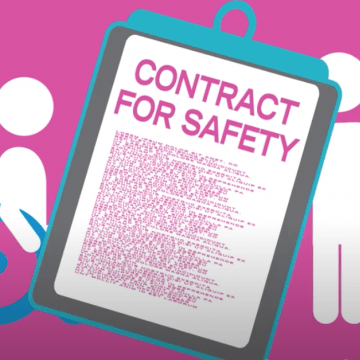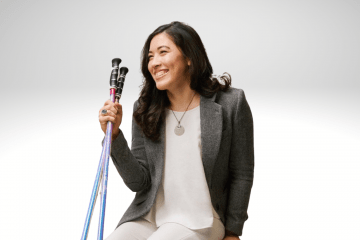
Explore information from experts and stories from people with CP who have experienced adolescence and adulthood.
The teen years and transitioning to adulthood, brings new considerations for a person with cerebral palsy and their family. Additionally, as a person with cerebral palsy ages, there are new factors to consider including wear and tear on joints, chronic pain and other health issues that come along with age for people with and without cerebral palsy. There is so much more to learn in this area and we are committed to bringing you the most up to date research in the field.
Adolescence and adulthood has amazing opportunities to find your identity, form relationships and find love. Check in here to read about the unique, sometimes challenging and often refreshing experiences of individuals with Cerebral Palsy.
Adults and Adolescents with Cerebral Palsy have a higher incidence of mental health challenges than the general population. In this section, we are highlighting stories written by individuals with Cerebral Palsy about their personal journey with mental health struggles.
-

Mental Wellness Among Adults with Cerebral Palsy Mental health care should be included at the outset, as part of discussions around physical, occupational, and speech therapies. I’ve seen studies on cerebral palsy’s effect on caregiver mental health — and that is important. Caregivers are part of the cerebral palsy community, too. It’s an interdependent one. There’s not enough about the nuance around how having cerebral palsy affects mental health.”
-
Get the Facts
How Cerebral Palsy Affects Adults Although the brain injury that causes cerebral palsy is nonprogressive, adults with CP can experience a variety of symptoms as they age which often depend on the type of CP they have, as well as the...
-

Depression and Anxiety in Adults With CP -

Finding Love -

Learning From Each Other -

Teen Years -

Teaching Your Parents -

Siblings -

Building Independence -

Risky Behavior -

Pushing Boundaries & Changing Beliefs -

Letting Go
-
Talking with Professionals
Preventive Care for Adults with Cerebral Palsy The Cerebral Palsy Foundation has created a checklist to help guide you in living the healthiest life possible. This checklist has been created for adults with cerebral palsy to provide basic guidance...
-

Episode 2: Cerebral Palsy Health. Mary Gannotti, PhD, PT: Fitness, Health and Function Across the Lifespan for Individuals with Cerebral Palsy In this episode, Mary Gannotti, PhD, PT, discusses fitness, health and function across the lifespan for individuals with cerebral palsy. -

Episode 6: Let's Talk CP. Growing up Kutcher. Part 1. Michael Kutcher on Life with Cerebral Palsy and So Much More! Wonder what it's like to grow up as Michael Kutcher? On this episode of "Let's Talk CP" Michael Kutcher and host Cynthia Frisina dive deep into Michael's childhood and journey to adulthood - including the good, the not so good and the very surprising. You won't want to miss what Michael has to say in this very candid and intimate conversation. -

Episode 8: Growing Up Kutcher. Michael Kutcher Part 2 Don't miss Part 2 of this very special podcast series when podcast host Cynthia Frisina dives deeper with Michael Kutcher into his life growing up with cerebral palsy, his "coming of age" as the twin brother of actor Christopher "Ashton" Kutcher, and what Michael is doing now with his new "diffability" concept and continued advocacy work on behalf of people with disabilities and organ transplants recently featured in Forbes Magazine https://www.forbes.com/sites/karlmoore/2021/07/08/michael-kutcher-on-turning-obstacles-into-opportunities/?sh=6ed0e70f722f -

The Accessible Stall The Accessible Stall is a disability podcast hosted by Kyle Khachadurian and Emily Ladau that keeps it real about issues within the disability community. Because we each have different disabilities and mobility levels, we approach everything we talk about with two unique viewpoints, offering our listeners a fresh insight into how differences in disability can color your experiences and perspectives. And we never shy away from offering our honest opinion. Even if they go against the grain of the disability community at large, we always speak our minds. -

One Doctor's Quest to Change Healthcare for Individuals with Disabilities This compelling podcast and article tell the story of one doctor who strives to improve the lives of those living with intellectual and physical disabilities despite many hurdles.
-
Town Hall
New Horizons Virtual Town Hall 6 - Cerebral Palsy Grows Up! Our educational series continues with this virtual event featuring a multi-disciplinary panel discussion on spasticity management and related issues for adults with Cerebral Palsy!
-

Optimizing Health and Wellbeing Across the Lifespan Though the initial insult or injury to the brain that causes cerebral palsy is non-progressive, aging with cerebral palsy and lack of physical activity during critical periods of development can impact biologic and metabolic function for adults with cerebral palsy. -

Preventive Care for Adults With Cerebral Palsy and Other Neurodevelopmental Disabilities: Are We Missing the Point? Adults with Cerebral Palsy have unique care needs related to physiological changes that occurred with growth and development with Cerebral Palsy, including mental health, yet experience many barriers to proper care. -

Prevalence and incidence of chronic conditions among adults with cerebral palsy: A systematic review and meta-analysis This study highlights the importance of monitoring and managing chronic conditions in adults with cerebral palsy. It also provides important information that can help healthcare professionals better understand the health needs of this population.
-

Growing up - Medical Transitions from Pediatric Care to Adult Care This presentation from the 2023 AACPDM Community Forum presents a model for creating a smooth transition from pediatric care to adult care for teens and young adults with cerebral palsy.
-
Support Tools
Growing up - Medical Transitions from Pediatric Care to Adult Care This presentation from the 2023 AACPDM Community Forum presents a model for creating a smooth transition from pediatric care to adult care for teens and young adults with cerebral palsy.
Well-established methods evaluating health constructs may not be applied in the same way for adults with CP, as compared to the general population, due to differences in anatomy and physiology, leading to missed opportunities for interventions, medication modifications, and other prevention goals.





























